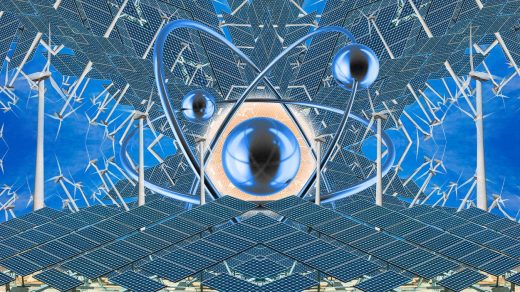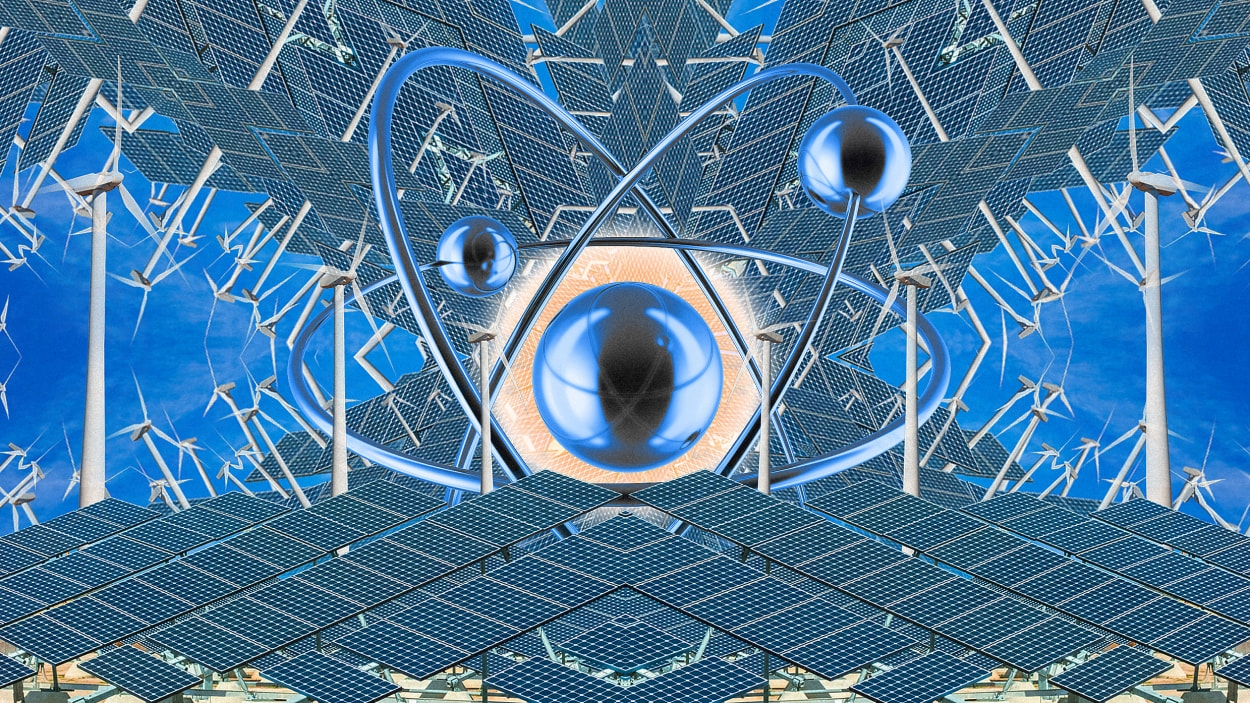Nuclear fusion will be a gamechanger—in the future. Wind and solar are critical right now
On December 5, inside a sprawling national lab in the Bay Area called the National Ignition Facility, scientists aimed 192 lasers at a tiny, peppercorn-size pellet and achieved a milestone in nuclear fusion research: For the first time, they were able to produce more energy than the laser energy that was used.
It’s one step toward potentially creating clean, limitless energy—though having tech that can actually be used at a power plant is a very long way off. “If you ask what the road is from this particular experiment to a machine that makes clean energy economically, it could be decades,” says Eric Gimon, a particle physicist and senior fellow at Energy Innovation, an energy policy firm.
The experiment demonstrated one crucial first step. The lasers created the heat and pressure to fuse together atoms, generating a huge burst of energy. But even though it achieved “ignition,” generating more energy than the lasers beaming into the lab, it was still a fraction of the total power needed to run the system. Firing the lasers used around 100 times more energy. In order for the system to feasibly work, it will have to become far more efficient. The process would also need to be able to work repeatedly; right now, the machine can only work once a day. The material used, tritium, is also rare and expensive.
The research will continue, and others are working on different approaches to fusion that may ultimately succeed. Still, to meet climate goals, the world will need to fully transition to a clean grid before nuclear fusion is commercially available. The technology needed to do that, including wind, solar, batteries, and improvements to the grid itself, is essentially ready now. “We have everything you need to get to 80, 90% clean, I believe,” Gimon says. “And that we’re still a fair way from, so we should be deploying like mad.” Other tech in development, including new forms of geothermal power, could help close the remaining gap. And that work needs to happen now, not decades from now, to have a chance of avoiding the worst impacts of climate change.
That’s not to say we shouldn’t keep investing in nuclear fusion research. (U.S. government funding has also been aimed partly at helping scientists understand how to keep our nuclear weapons stockpile safe, not just producing clean energy.) “In an energy system, it’s very valuable to have a diverse set of resources—spread your bets in terms of where energy is coming from,” Gimon says. “In the same way a multi-crop garden is much more resilient than than monocrop garden. Anything we can add to the set of possibilities that provide clean power is a positive.”
(36)



